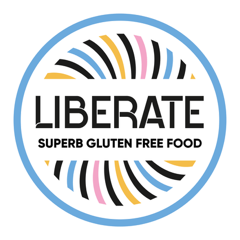
Secret Gluten That Might Be in Your Pantry
Transitioning to a gluten-free lifestyle can feel overwhelming—especially when you realise gluten can hide in some very unexpected places. While avoiding obvious culprits like bread and pasta is straightforward, many pantry staples and fridge favourites sneak gluten in through thickeners, flavour enhancers, or preservatives.
For the newly gluten-free, understanding where gluten hides is essential to keeping your meals safe and your health on track. In this guide, we will uncover the secret sources of gluten that may be sitting in your pantry—and share gluten free alternatives that the whole family can enjoy.
1. Soy Sauce and Other Condiments
Surprise! Traditional soy sauce is made with wheat. Unless it’s labeled gluten-free, it is not safe. Tamari is a fantastic gluten free alternative with a nearly identical flavour, and is perfect for stir-fries, marinades, and sushi nights.
Other sneaky condiments to watch:
-
BBQ sauce
-
Salad dressings
-
Ready-made gravy
-
Marinades
Tip: Always read the label. Look for certified gluten-free on all sauces and dips, or consider making your own.
2. Stock Cubes and Broths
Stock cubes and liquid broths often contain wheat-based thickeners or flavour additives that contain gluten. Even seemingly simple "chicken stock" may be unsafe. Instead, we recommend trying:
-
Certified gluten-free stock cubes
-
Gluten-free liquid broths
-
Homemade stock using fresh herbs, vegetables, and meats
3. Processed Meats and Deli Items
Many people are surprised to learn that ham, sausages, meatballs, and deli meats can include gluten-containing fillers, binders, or marinades.
To stay safe:
-
Choose products labeled gluten-free
-
Ask your butcher or deli staff about ingredients
-
Avoid pre-marinated or flavoured meat unless it’s confirmed as gluten-free
4. Flavoured Rice and Pasta Mixes
Pre-seasoned rice and pasta packets can contain wheat-based thickeners, artificial flavourings, or soy sauce derivatives. Instead, we recommend trying:
-
Plain rice or gluten-free pasta with homemade seasoning
-
Use fresh herbs, garlic, and lemon juice for easy, flavourful meals
These gluten free alternatives are easy to customise and a great way to keep gluten-free meals exciting without compromising safety.
5. Cereals and Granolas
Even cereals labeled “whole grain” or “natural” can hide malt flavouring (made from barley) or wheat-based ingredients. Granola can also be risky due to added clusters or flavour coatings. Instead, we recommend trying:
-
Gluten-free labeled cereals (especially for gluten free kids who need quick breakfasts)
-
Gluten-free oats with your own added toppings
-
Grain-free granola made with nuts, seeds, and dried fruit
This way, you can keep gluten free breakfast options fun and satisfying for everyone in the family.
6. Baking Powder and Flour Blends
Baking powder can occasionally contain gluten as a stabiliser. And not all flour blends are safe—some mixes may include wheat-based starches. Instead, we recommend trying:
-
Certified gluten-free baking powder
-
All-purpose gluten-free flour blends made from rice, tapioca, or almond flour
If you're newly gluten-free and enjoy baking, it's worth investing in a reliable gluten-free flour brand and checking all your leavening agents.
7. Pre-Shredded Cheese
This one surprises a lot of people - our team included! Some pre-shredded cheeses are coated with anti-caking agents that may contain wheat starch.
To avoid this hidden gluten:
-
Choose cheese labeled gluten-free
-
Shred your own from a block (it's fresher, too!)
8. Spices and Seasoning Blends
Pure herbs and spices are naturally gluten-free, but seasoning blends sometimes include wheat-based fillers or anti-clumping agents.
To play it safe:
-
Buy single-ingredient herbs and spices
-
Create your own blends at home
-
Choose trusted gluten-free spice brands
If you’re newly gluten-free, start by cleaning out your pantry and fridge with a sharp eye for the ingredients above. Replace unsafe items with gluten free alternatives that make everyday meals easy and enjoyable—especially if you’re cooking for gluten free kids or family members who share meals.
Being newly gluten-free is a big adjustment, but with the right knowledge and a well-stocked pantry, it can also be empowering and delicious.
View our gluten free range:
Share
